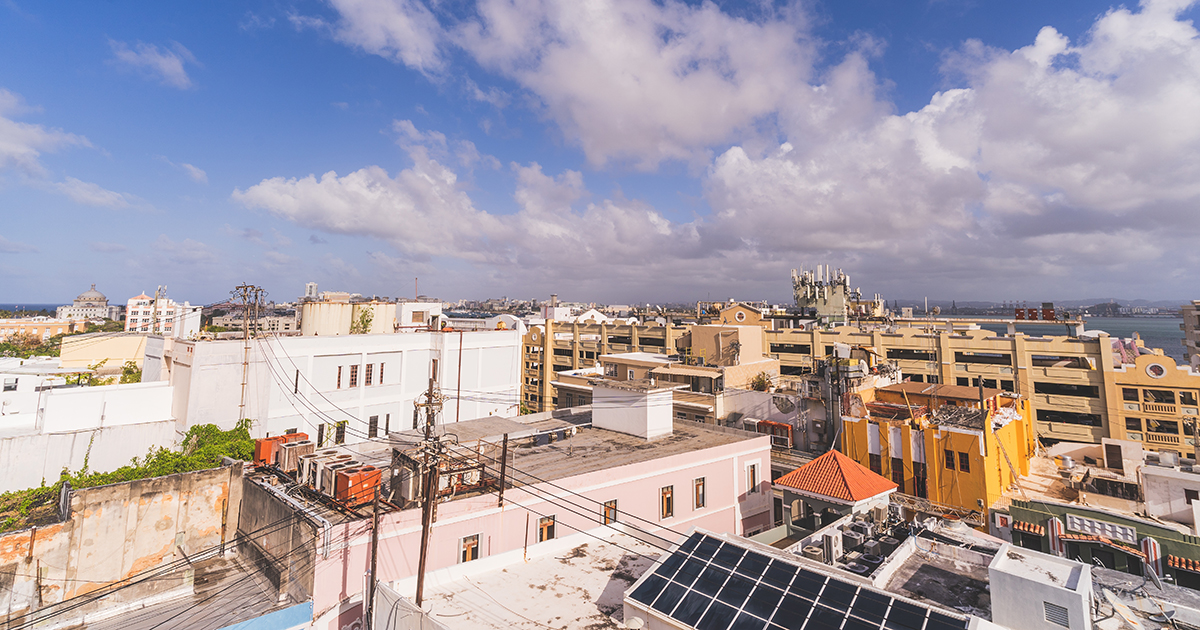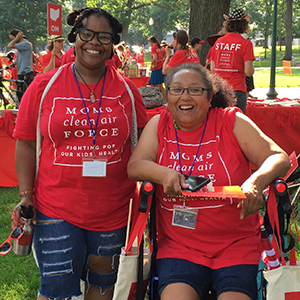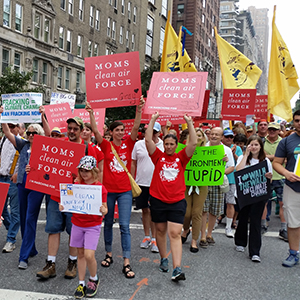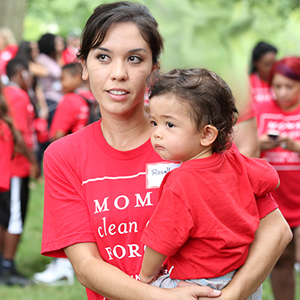This resource has been factchecked by policy experts, using the latest scientific research. Find all our sources linked below.
Why switch to solar
Solar energy is clean, abundant, and doesn’t generate pollution or threaten public health the way dirty electricity from fossil fuels does. People in the United States have already installed enough solar to power 36 million homes, and this number is on the rise. An estimated 15% of U.S. homes will have a solar photovoltaics (PV) system by 2030, says the Solar Energy Industries Association. Solar also boosts the economy by providing hundreds of thousands of jobs.
The sunlight that shines on the earth in just one and a half hours has more power than the world consumes in an entire year. There are several ways to tap this sunshine. The most common for homes is PV, which harnesses light via panels on roofs or the ground. Large power plants run by concentrating solar-thermal power (CSP), which uses the sun’s heat, not light, to produce electricity.

How many panels a structure needs depends on location, size, and amount of direct sun. Panels can last several decades. Those installed in the early 1980s still perform at original capacity. Now there are ways to recycle and reuse materials and equipment at the end of their useful life. Here are more reasons to adopt solar today.
Solar works in most weather.
Sunny and cold are the optimal conditions for solar panel performance as heat can complicate the conversion of sunlight into electricity. Still, some sun reaches panels even when it’s raining, snowing, or below freezing. Solar is also very efficient; typical panels have an efficiency rate of about 22%, which sounds low but is enough to power any home’s needs. Solar systems work at night and during power outages too because electricity generated from sunlight can be stored in batteries and used at those times.
Solar is affordable.
The International Energy Agency calls solar the cheapest source of electricity generation in most parts of the world. The price is at or below the price of electricity provided by the grid in most parts of the country. This figure has been declining as demand for solar energy grows. Residential solar systems can be pricey up front—classic sticker shock—but thanks to financing plans, as well as possible local, state, and federal tax incentives and rebates that offset upfront costs, you may not have to pay full price. Once a system is installed, it doesn't require costly upkeep.

Solar options exist for all.
Not everyone can—or wants to—install a home PV system. Thankfully, there are solar possibilities for apartment dwellers, renters, and homeowners alike. Ask your utility company about available renewable energy options or purchasing energy from a local solar farm—a large collection of PV panels that serves multiple customers. Some towns, villages, and even states, including New York, also facilitate signups for community solar farm programs—check with yours. These programs take the guesswork out of signing up for solar, and the purchasing power of many participants helps with the upfront cost and installation of a large solar energy system. For renters and apartment dwellers who prefer their own panel, there are plug-in ones on the market.
Panels are low maintenance.
Most roofing materials, as long as they’re in good shape, can work with solar panels. And solar panels can protect roofs from the elements. They can even insulate buildings, providing warmth in the winter and cooling in the summer. After installation, panels are easy to care for. Occasionally, they need to be rinsed with water to clean them of regular outdoor gunk like leaves, pollution, and dust.

Solar panel materials are eco-friendly.
Most solar panels on the market are made with nontoxic crystalline silicon. These panels are about three-quarters glass, and the rest is plastic, aluminum, silicon, copper, and a small amount of silver and other metals. Metal mining as well as any kind of manufacture comes with concerns and possible air pollution. However, after production, the resulting panel is a zero-emission alternative to fossil fuel energy for its 20-year lifetime. Solar panels are made to endure all weather conditions, so there’s minimal threat of materials releasing their chemical components into the environment during normal use. They’re also durable, long-lasting, and recyclable.

Solar can drive economic justice.
Rooftop solar has made a big difference in hurricane-ravaged Puerto Rico, which struggles with deficient electrical power infrastructure, increasing electricity prices, and slow reconstruction of the power grid. Extreme heat caused by climate change makes power that much more essential—for cooling people with existing medical conditions and providing adequate learning environments for kids. Rooftop solar provides an immediate solution that can also decrease the negative economic impacts of power outages.
Solar treads lightly on the land.
Solar farms have a light footprint. Land can be reverted to agricultural use after being used for solar installations. As an added benefit, giving soil a rest for 20 to 25 years can help it recover, making it better for farming in the future.
Go solar!
There’s never been a better time to embrace solar—either with a home system or through your utility. If your town doesn’t already offer a community solar option, ask your elected officials for one. While you’re at it, ask for solar at your job and local schools. If anyone has questions about switching to solar, just point them in the direction of these useful sources.

Learn more about Moms’ work on clean energy.
Updated: February 2025




